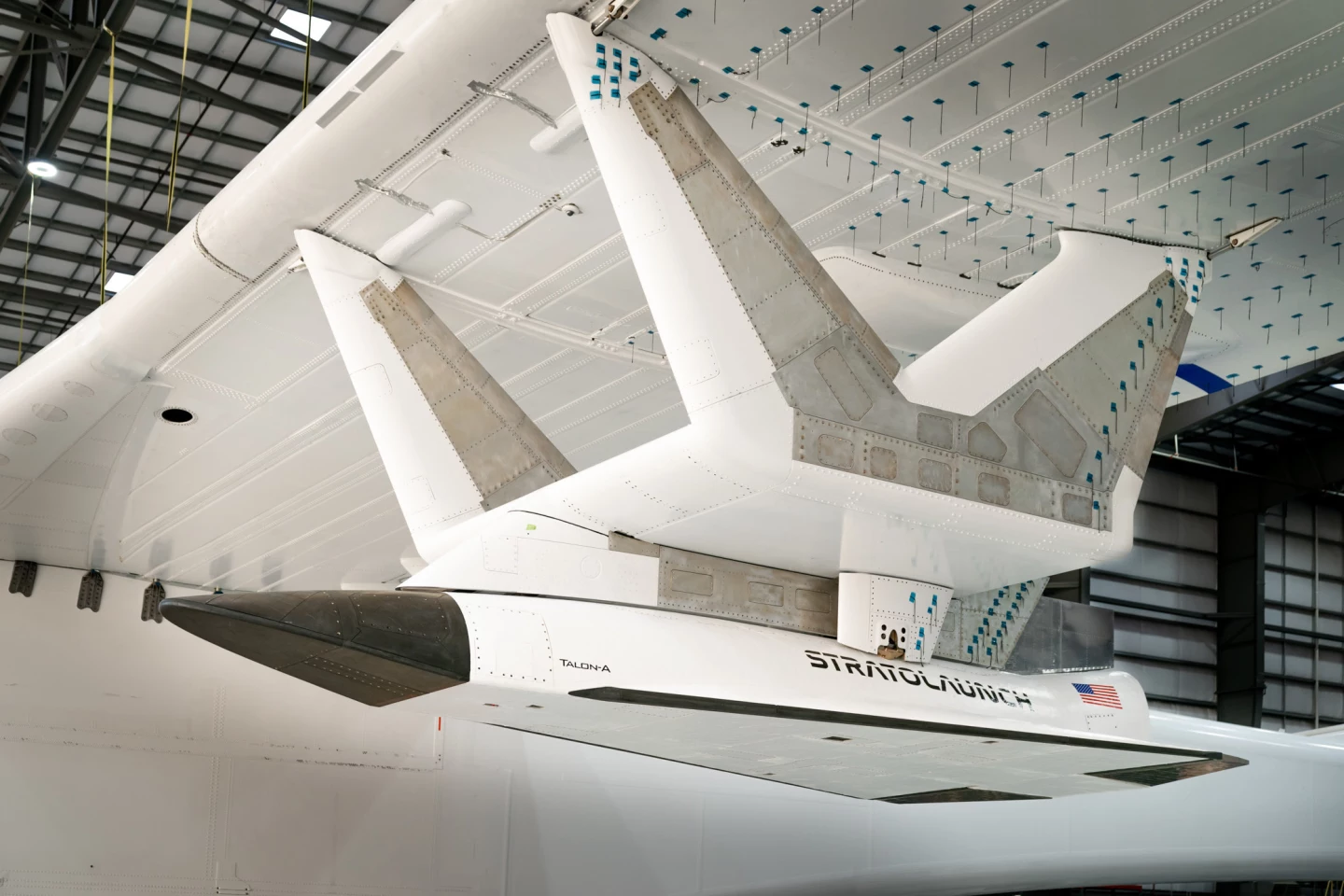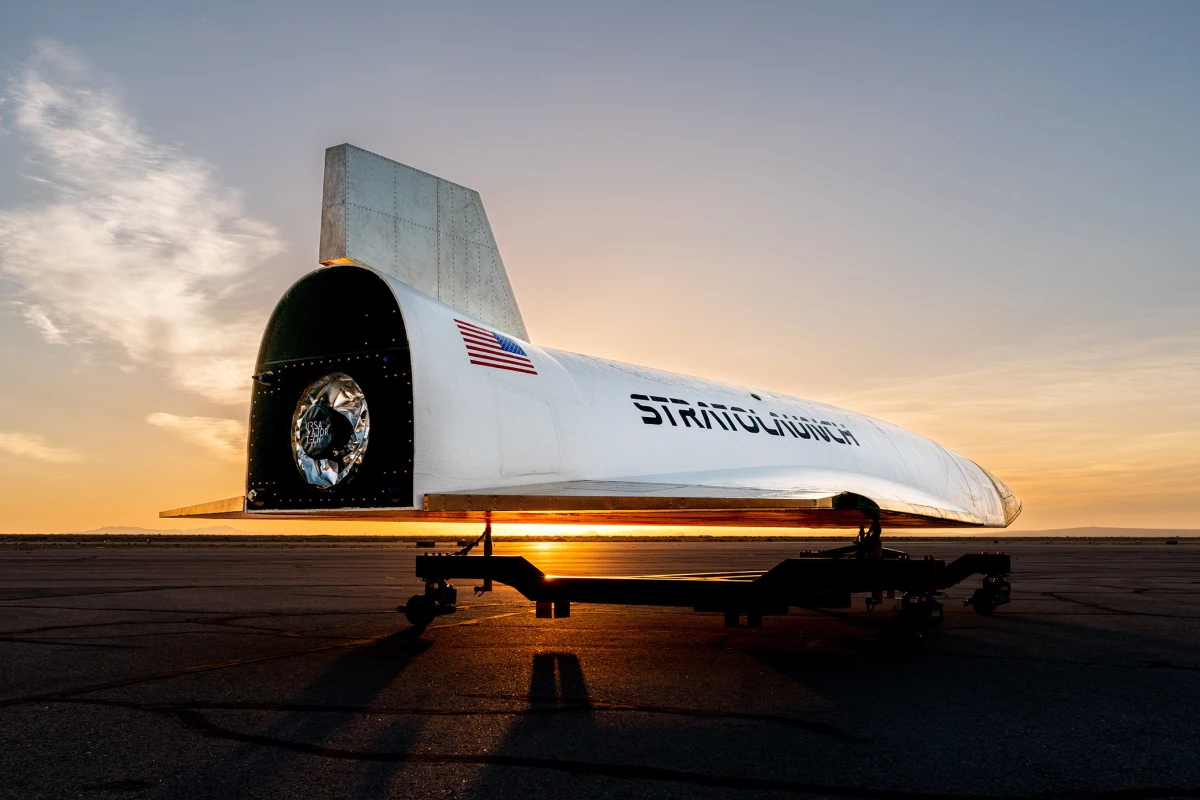Back in 2020 we first heard about the Talon-A hypersonic aircraft, which would be released from the world's largest airplane at an altitude of 35,000 ft (10,000 m). A test version of the Talon-A, called the TA-0, was unveiled this week.
Both the Talon-A and its Roc carrier aircraft are designed by California aerospace company Stratolaunch.
With its two side-by-side fuselages, six Boeing 747 engines, 28 wheels, and wings that stretch 385 ft (117 m) from tip to tip, the Roc is the currently the largest airplane in the world by wingspan. And yes, it has actually flown.

Plans originally called for the Roc to carry launch vehicles into the stratosphere, then release them. Those vehicles would then fire their rocket engines, carrying their spacecraft payload into low-Earth orbit. The idea was that launching spacecraft in this fashion would be much easier – and use much less fuel – than having the launch vehicle take off directly from the ground, fighting Earth's gravity all the way up.
After a change in company ownership, it was decided that the Roc would instead be used to release uncrewed Talon-A aircraft, which would fly at speeds of over Mach 5 before autonomously landing themselves on a runway. They would be used mainly to conduct research on different aspects of hypersonic flight.
The TA-0 isn't the finished rocket-powered version of the Talon-A, but is instead a test vehicle that will be used to assess and validate the system which will release it from the underside of the Roc's center wing (the section of the wing between the fuselages). Not much information has been provided regarding the TA-0, other than the fact that it does not have an engine – we're assuming this means that it will glide or parachute to the ground, but we've yet to hear back from Stratolaunch.

The Roc-mounted wing-like pylon from which it will be released is made of aluminum with carbon fiber skins, weighs approximately 8,000 lb (3,629 kg), and takes up 14 ft (4.3 m) of the Roc's center wingspan. It incorporates a winch system, which will be used to pull the TA-0 up and into place before takeoff.
It is hoped that the first full Roc-released flight of the TA-0 will take place later this year.
Source: Stratolaunch





